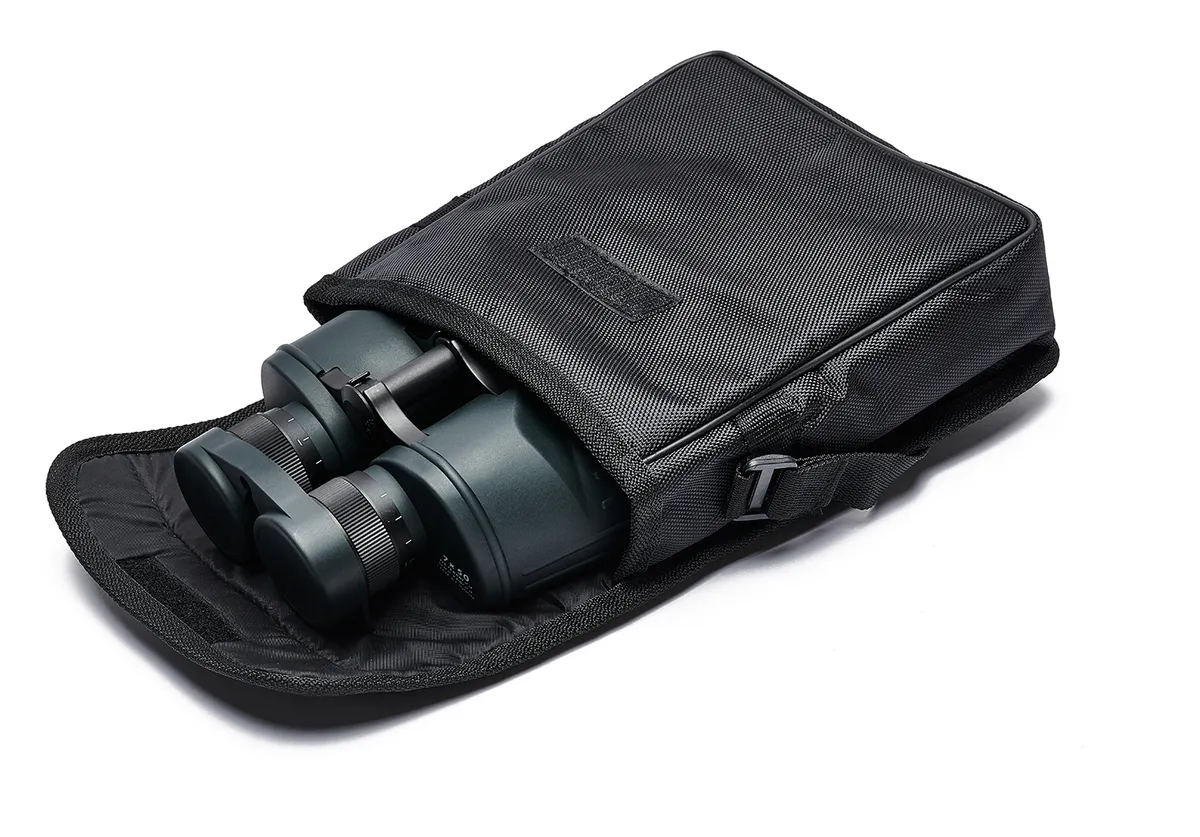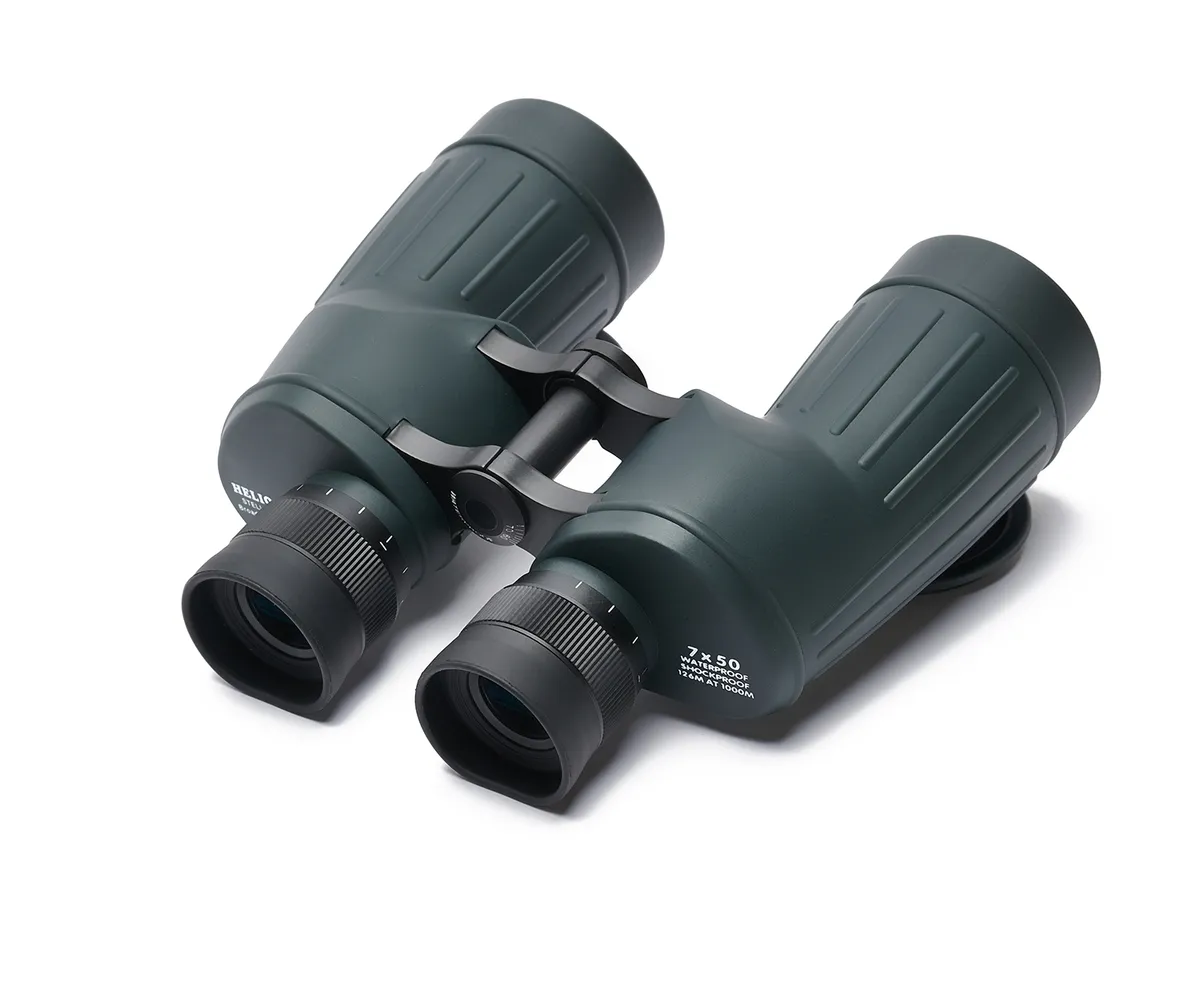With a green and black rubber-armoured outer skin, the Helios Stellar-II binoculars have a stylish look and feel with good grip. The front lens caps fit snugly and are directly attached to the underside of the objective barrels so they cannot drop onto your face and can be quickly put back on for protection.
The eyecups are rubber and can be folded down to enable spectacle wearers to see the full field of view, although they are a little stiff.
The actual field of view is 7.2°, so quite wide with a little distortion towards the edges, but nothing too distracting.
We could fit the ‘box’ part of Lyra in comfortably and these binoculars are ideal for scanning along the Milky Way’s star fields.
Both eyepieces can be focused independently with a smooth action, and the interpupillary distance (the distance between the pupils of your eyes) can be adjusted between 56–74mm, a range which will cover most users.
These binoculars appear on our list of the best binoculars for astronomy and stargazing

All the optical surfaces are multi-coated for better contrast; we found that Arcturus and the Garnet star appeared as crisp orange stars, but we still needed to mount the binoculars on a tripod to split Albireo.
On the tour of our test objects in the night sky, we noted the Andromeda Galaxy covered a good proportion of the view with a hint of its galactic disc, but under darker skies we suspect the view would have been better.
The Double Cluster sparkled despite being small, but both component clusters were easily seen. The star fields in Cygnus were well seen, and we caught the star cluster M39 as a small triangular shape.
Indeed, the Cygnus Rift, an area of the Milky Way obscured by dark dust clouds, was nicely traced and continued down into Scutum where we had a good view of the Scutum Star Cloud.
Nebulae may be small, but we saw the Dumbbell Nebula as a small smudge, along with the Omega Nebula, lower down in the south at the time of viewing.

Although the crescent Moon was small in the evening twilight it was a delight, as we could see Mare Crisium, although we did notice a little colour fringing when it was placed towards the edge of the field of view.
With the binoculars on a tripod, we could make out four of Jupiter’s moons and a definite oval
shape to Saturn, which suggested a hint of its ringed nature.
Vital stats
- Price £169
- Field of view 7.2o
- Weight 1.1kg
- Extras Foldable rubber eyecups, front and back lens covers, padded strap, rubber armouring, nitrogen-filled waterproof optics, tripod adaptor, carry case
- Supplier Optical Vision Ltd
- Tel 01359 244200
- www.opticalvision.co.uk
This review originally appeared in the September 2020 issue of BBC Sky at Night Magazine.

